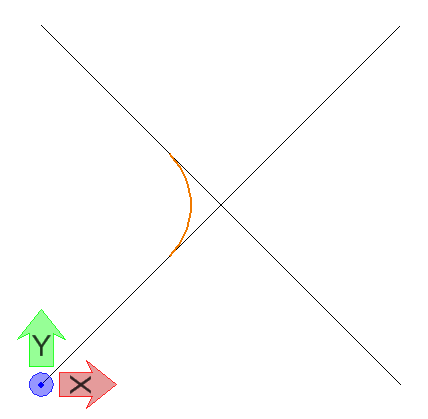Introduction
The DgnPlatformNet API helps developers wanting to create custom applications for MicroStation® from Bentley Systems. We create a MicroStation application as a DLL, written using C# and built with the Microsoft tools provided with Visual Studio.
Bentley Geometry API
The Bentley Geometry API lives in .NET namespace Bentley.GeometryNET and
is documented in the Bentley Geometry NET help file.
A related help file is Bentley Geometry NET Structs, which documents a huge range of classes and structs,
such as the ubiquitous DPoint3d.
Bentley Geometry CurveVector
CurveVector is a .NET class in the Bentley Geometry API.
It has many uses, particularly when assembling a collection of CurvePrimitive objects.
In this example, I want to show how to convert a LineElement to a CurveVector
en route to constructing a DRay3d corresponding to each of LineElements
chosen by a user.
Using the two DRay3d objects we can construct a fillet using
DEllipse3d.TryCircularFilletBetweenRays …

DEllipse3d.TryCircularFilletBetweenRays Example
I wrote this example to show how to construct a circular fillet between two lines.
The lines are represented in .NET by LineElement and the fillet by an ArcElement.
However, there's no direct method to construct a fillet from those DGN primitive elements.
Instead, we must move into the world of pure geometry.
We must first convert each LineElement to a DRay3d.
Then we can use DEllipse3d.TryCircularFilletBetweenRays to make a fillet.
Finally, we convert the fillet to an ArcElement.
using Bentley.GeometryNET; using Bentley.DgnPlatformNET; using Bentley.DgnPlatformNET.Elements; using Bentley.MstnPlatformNET;
ArcElement ConstructFilletElement (DPoint3d point)
{
DgnModel model = Session.Instance.GetActiveDgnModel();
LineElement l1 = (LineElement)model.FindElementById(FirstLineId);
LineElement l2 = (LineElement)model.FindElementById(SecondLineId);
DRay3d rayA = Geometry.MakeRayFromLineElement(l1);
DRay3d rayB = Geometry.MakeRayFromLineElement(l2);
DEllipse3d fillet;
DVector3d v = new DVector3d(Intersection, point);
double radius = v.Magnitude;
if (DEllipse3d.TryCircularFilletBetweenRays(rayA, rayB, radius, out fillet))
{
ArcElement filletElement = new ArcElement(model, null, fillet);
return filletElement;
}
else
{
string s = $"Invalid parameters to construct fillet";
MessageCenter.Instance.ShowMessage(MessageType.Warning, s, s, MessageAlert.Balloon);
}
return null;
}
DRay3d MakeRayFromLineElement(LineElement line)
{
DPoint3d a; DPoint3d b;
CurveVector cv = line.GetCurveVector();
if (cv.GetStartEnd(out a, out b))
{
return new DRay3d(a, b);
}
return new DRay3d();
}
Create Fillet Example Project
The Create Fillet Example project for Visual Studio provides the above code.
The example provides a pick function, implemented in the CreateFilletTool class,
which inherits from the .NET DgnElementSetTool.
The Create Fillet Tool lets a user pick two LineElement primitives.
Then it uses the code above to calculate a fillet, realised as a circular arc.
The fillet is drawn in dynamics, so its size and location changes as the user moves the mouse.
With the final datapoint, the fillet is added to the DGN model.

Download the Create Fillet Example
You can download the Create Fillet Example Visual Studio project.
The ZIP file includes the .NET project CreateFilletExample.
- Unpack the ZIP archive to a suitable location
- Open the project with Visual Studio
- You may need to change some project settings — particularly the output folder
- Build the project
- Load into MicroStation using key-in
mdl load CreateFilletExample - The command table includes
CREATEFILLETEXAMPLE PICK LINE
Questions
Post questions about C# and the DgnPlatformNet API to the MicroStation Programming Forum.
